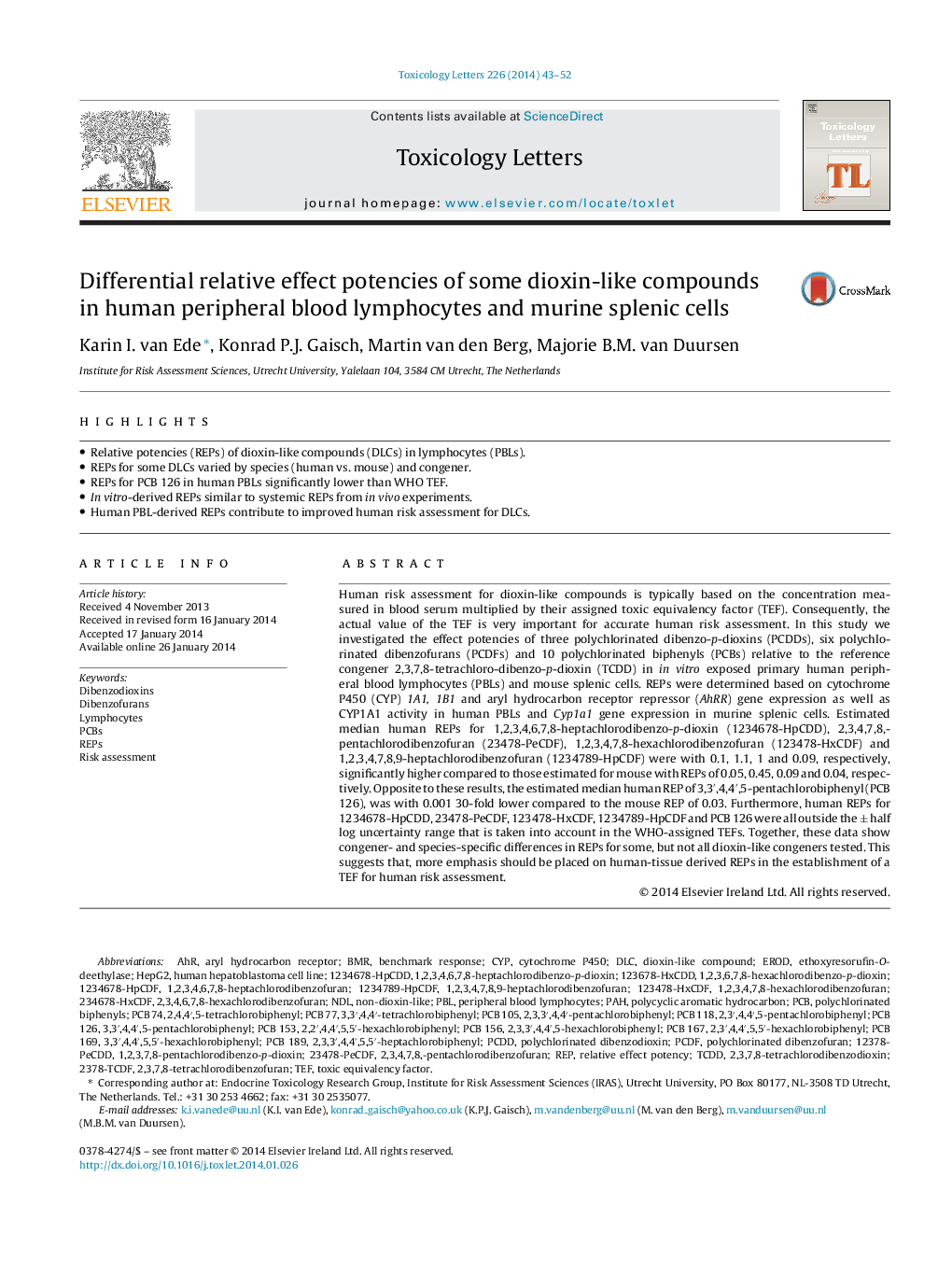| کد مقاله | کد نشریه | سال انتشار | مقاله انگلیسی | نسخه تمام متن |
|---|---|---|---|---|
| 2599060 | 1133176 | 2014 | 10 صفحه PDF | دانلود رایگان |
• Relative potencies (REPs) of dioxin-like compounds (DLCs) in lymphocytes (PBLs).
• REPs for some DLCs varied by species (human vs. mouse) and congener.
• REPs for PCB 126 in human PBLs significantly lower than WHO TEF.
• In vitro-derived REPs similar to systemic REPs from in vivo experiments.
• Human PBL-derived REPs contribute to improved human risk assessment for DLCs.
Human risk assessment for dioxin-like compounds is typically based on the concentration measured in blood serum multiplied by their assigned toxic equivalency factor (TEF). Consequently, the actual value of the TEF is very important for accurate human risk assessment. In this study we investigated the effect potencies of three polychlorinated dibenzo-p-dioxins (PCDDs), six polychlorinated dibenzofurans (PCDFs) and 10 polychlorinated biphenyls (PCBs) relative to the reference congener 2,3,7,8-tetrachloro-dibenzo-p-dioxin (TCDD) in in vitro exposed primary human peripheral blood lymphocytes (PBLs) and mouse splenic cells. REPs were determined based on cytochrome P450 (CYP) 1A1, 1B1 and aryl hydrocarbon receptor repressor (AhRR) gene expression as well as CYP1A1 activity in human PBLs and Cyp1a1 gene expression in murine splenic cells. Estimated median human REPs for 1,2,3,4,6,7,8-heptachlorodibenzo-p-dioxin (1234678-HpCDD), 2,3,4,7,8,-pentachlorodibenzofuran (23478-PeCDF), 1,2,3,4,7,8-hexachlorodibenzofuran (123478-HxCDF) and 1,2,3,4,7,8,9-heptachlorodibenzofuran (1234789-HpCDF) were with 0.1, 1.1, 1 and 0.09, respectively, significantly higher compared to those estimated for mouse with REPs of 0.05, 0.45, 0.09 and 0.04, respectively. Opposite to these results, the estimated median human REP of 3,3′,4,4′,5-pentachlorobiphenyl (PCB 126), was with 0.001 30-fold lower compared to the mouse REP of 0.03. Furthermore, human REPs for 1234678-HpCDD, 23478-PeCDF, 123478-HxCDF, 1234789-HpCDF and PCB 126 were all outside the ± half log uncertainty range that is taken into account in the WHO-assigned TEFs. Together, these data show congener- and species-specific differences in REPs for some, but not all dioxin-like congeners tested. This suggests that, more emphasis should be placed on human-tissue derived REPs in the establishment of a TEF for human risk assessment.
Journal: Toxicology Letters - Volume 226, Issue 1, 7 April 2014, Pages 43–52
